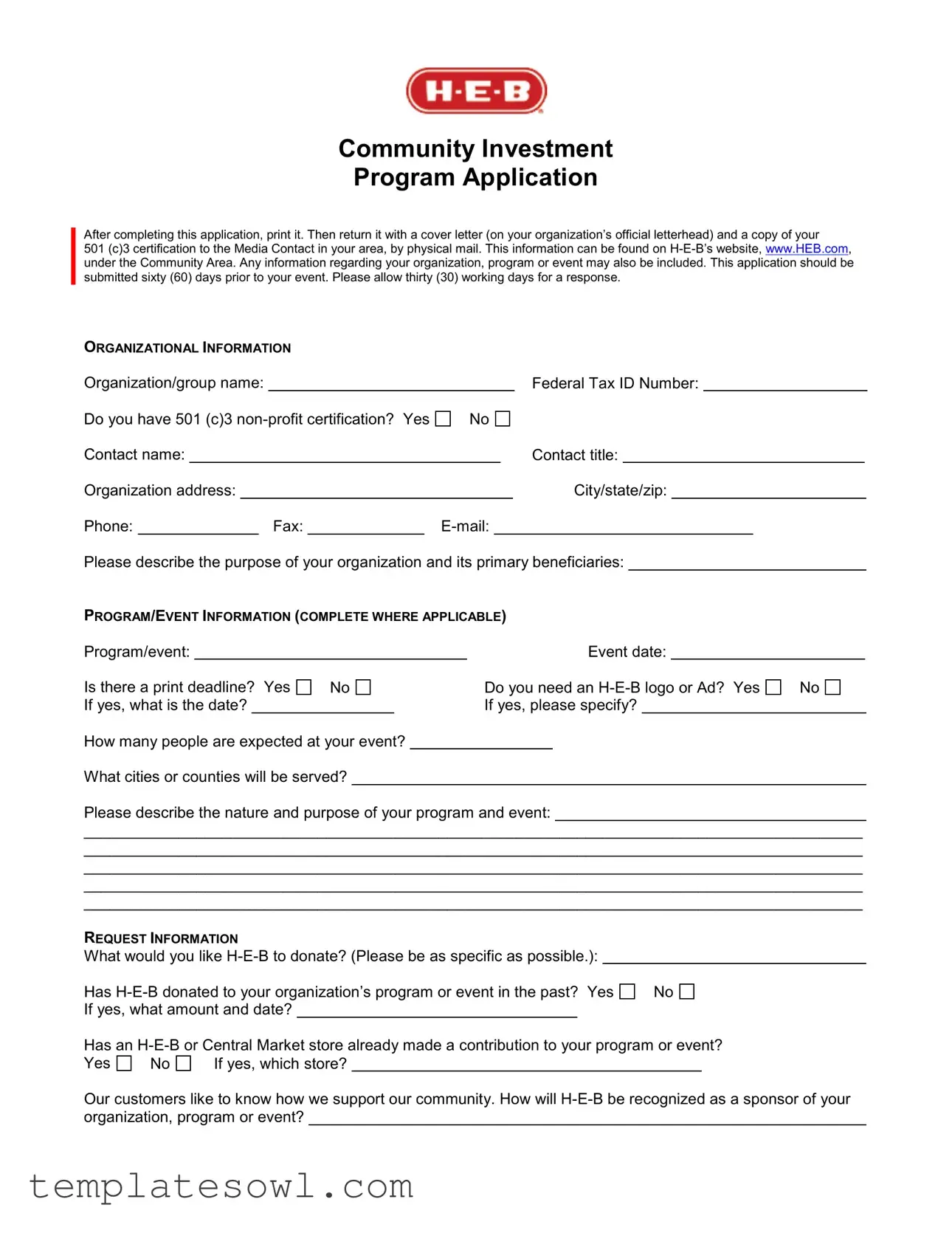What is the purpose of the Community Investment Application form?
The Community Investment Application form is designed to facilitate funding requests from individuals and organizations that seek to improve community resources or provide essential services. The form helps ensure transparency and accountability in how funds are allocated, allowing community members to contribute to local development effectively.
Who is eligible to apply for funding?
Eligibility criteria for the Community Investment Application vary based on the specific funding program. Generally, nonprofit organizations, local government entities, and community groups engaged in projects that benefit the community can apply. It is important to ensure that the proposed project aligns with the goals of community improvement.
What types of projects are considered for funding?
Funding often supports a wide range of projects, including but not limited to community beautification initiatives, educational programs, public health campaigns, and infrastructure improvements. Applicants should clearly articulate how their projects will benefit the community and meet specific needs.
Is there a submission deadline for the application?
Yes, there is typically a submission deadline for applications. This deadline can vary based on funding cycles or specific program requirements. Applicants should check the official guidelines for the exact date to ensure timely submission, as late applications may not be considered and can miss valuable opportunities.
What information is required on the application form?
The application form usually requires detailed information about the organization, the proposed project, and how the funding will be used. Applicants may need to provide financial projections, project timelines, and descriptions of community impact. It is advisable to prepare this information thoroughly to strengthen the application.
How will the applications be evaluated?
Applications are typically evaluated based on predetermined criteria such as feasibility, community impact, sustainability, and alignment with community needs. An evaluation committee may review the submissions and prioritize projects that demonstrate clear benefits and effective use of funds.
What happens after the application is submitted?
After submission, applicants may receive confirmation that their application has been received. The review process will then take place, during which applicants may be contacted for additional information. Once evaluations are complete, successful applicants will be notified of their funding approval and next steps.
Where can I find assistance with the application process?
Many organizations offer guidance for individuals seeking assistance with the Community Investment Application process. Resources may include workshops, informational sessions, and one-on-one consultations. It's advisable to reach out to local community development organizations or funding entities for support.



 !"#$$%&'&($
!"#$$%&'&($ #$$
#$$  $)*+!,
$)*+!,
 3
3
 14
14
 3
3
 14
14